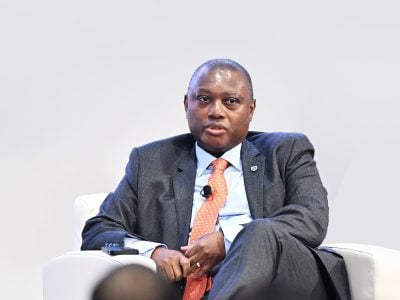African governments have long lists of investment ideas essential for improving living standards. Taxes, foreign and domestic investment, and overseas aid all fall short of the financing required to meet these investment needs. Ideally, there would be an abundant flow of long-term capital from, into, and among African countries that did not create any debt. However, this is not the reality. So, to boost development, and make economies competitive, many African countries have chosen to borrow on global capital markets.
This access to international debt markets was hard-won and should be viewed as a success. African countries pulled in the capital by turning their economies around after a prolonged crisis in the 1980s and 1990s. All the while historically low interest rates pushed in capital as part of a global search for yield. By mid-2022 there were $140bn of outstanding eurobonds, that were issued by 20 African countries.
When compared with other parts of the world, African countries’ debt levels in US dollar terms are tiny. Others have borrowed vast amounts more. Even when debt levels are compared relative to the size of economies, only a few African countries stand out as having particularly high levels of debt. However, it is in the composition of the debt and the cost of borrowing that the danger lies.
While rich world economies borrow in their own currency, most African countries are dependent on borrowing in someone else’s currency that they cannot conjure up or print. It is these pressures that have prompted widespread concern about a coming debt crisis.
There are vastly different debt situations to be found among African countries. But general worries about rising debt levels became more audible in 2019, even before the pandemic shock meant debt alarms rang louder. While there have not been the African sovereign defaults in 2020 and 2021 that many feared, there is concern that debt sustainability has been eroded.
In 2022, inflation and recession fears began to shake the US and Europe while their central banks hiked interest rates. Meanwhile China’s economic growth slowed as it grappled with continued Covid-19 lockdowns and mayhem in its property sector. These factors drove up the cost of borrowing to Kilimanjaro-high levels for African countries and shut out all but a few from issuing new hard currency bonds.
There are two scenarios for what happens next. The first has African countries muddling through for a year or two until global challenges ease. In this scenario markets re-open in time for a wall of African eurobonds to be refinanced in 2024 and 2025.
In a second, bleaker scenario, global interest rates remain high and the market window remains shut. This would prevent many African countries from refinancing their debt, and numerous defaults would follow.
How to prevent a crisis
To prevent such a systemic debt crisis a financed rescue plan should be drawn up.
The design needs reflect how the debt landscape has changed over the past decade and be based on insights from African policy architects. Private creditors should be in the room alongside official creditors, and not left outside until an agreement is eventually reached.
There should be a menu of options that would allow countries in distress to select those best suited to their problems. Old debt could be swapped for new more flexible bond contracts that could allow governments to repay bonds or push forward maturities in times of trouble. And where refinancing is most problematic, credit enhancements, such as full or partial guarantees of a sovereign’s loans or bonds, could be employed.
In exchange for the financial support package African governments should commit to better borrowing. Chief safeguards include tighter use of proceeds.Here we are talking prioritised lists of projects, tools for better project design, and improved procurement, with all the information on public investment put in a database and made public. Every effort should also be made to borrow in local currency.
Further, countries should seek to build sustainable brands. Countries that can convincingly set out environmental, social, and governance credentials will be able to attract more and better capital, whether from bond markets or in the form of direct investment or official sector support.
Gregory Smith is the author of “Where Credit is Due: How African Debt Can be a Benefit Not a Burden”
Want to continue reading? Subscribe today.
You've read all your free articles for this month! Subscribe now to enjoy full access to our content.
Digital Monthly
£8.00 / month
Receive full unlimited access to our articles, opinions, podcasts and more.
Digital Yearly
£70.00 / year
Our best value offer - save £26 and gain access to all of our digital content for an entire year!
 Sign in with Google
Sign in with Google 



